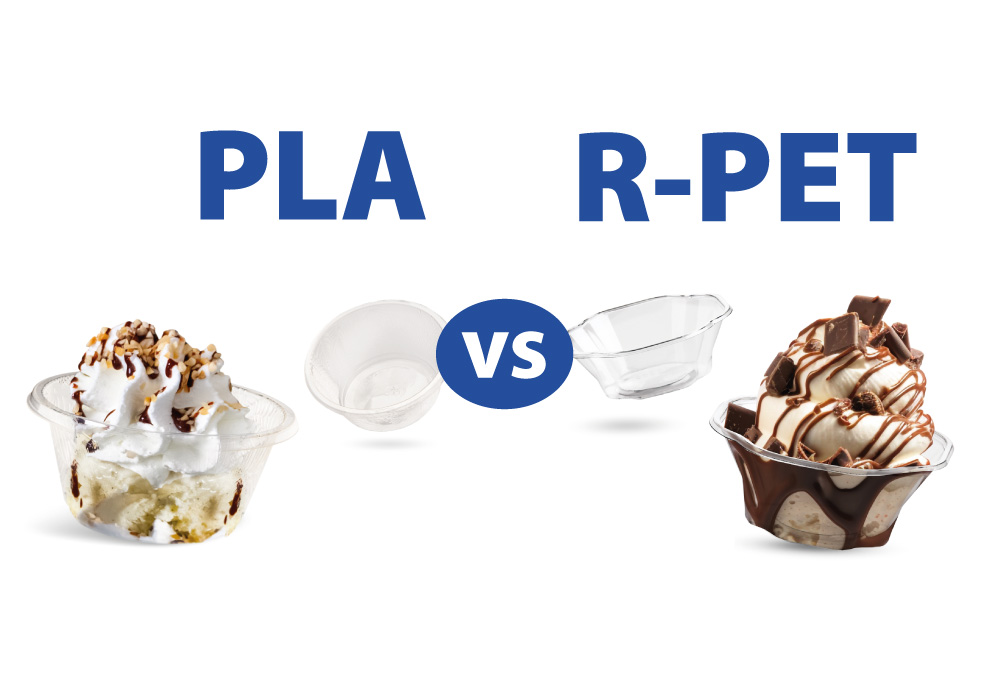PLA or R-PET? Choose the ideal solution for you!
Both PLA and R-PET are materials that fit into the circular economy, but each provides different advantages.
Knowing their characteristics is crucial to choosing the most suitable material for your needs.
PLA: Compostable and from Renewable Sources
PLA is a material made from renewable sources, such as corn starch.
- Once used, PLA is industrially composted and turned into nutrients for the earth, thus reducing waste.
- It is essential that it is disposed of correctly, following the composting flow to ensure its full ecological potential.
R-PET: Recycled and Recyclable
R-PET is an excellent choice for those who seek to promote a circular economy based on recycling.
- R-PET is a material that contains up to 70% recycled plastic, and is fully recyclable at the end of its life.
- The finished product can be reused to produce new items, helping to close the material's life cycle.


Why is it important to make the right choice?
Being aware of the differences between PLA and R-PET allows you to make more informed and responsible decisions.
If your goal is to reduce organic waste, PLA is the ideal choice.
If, on the other hand, you aim to value recycled material and promote product circularity, R-PET is the right solution.
